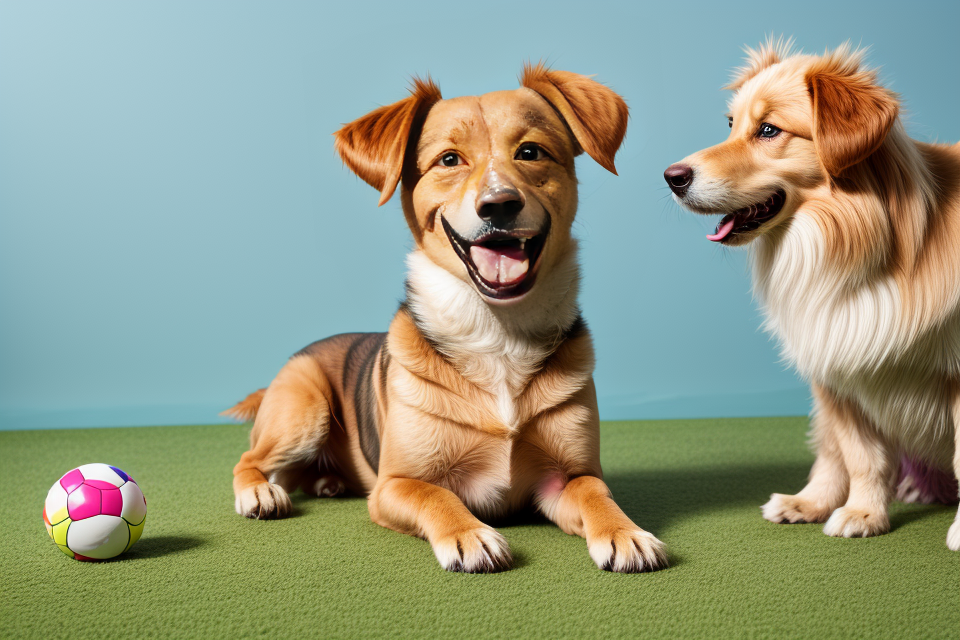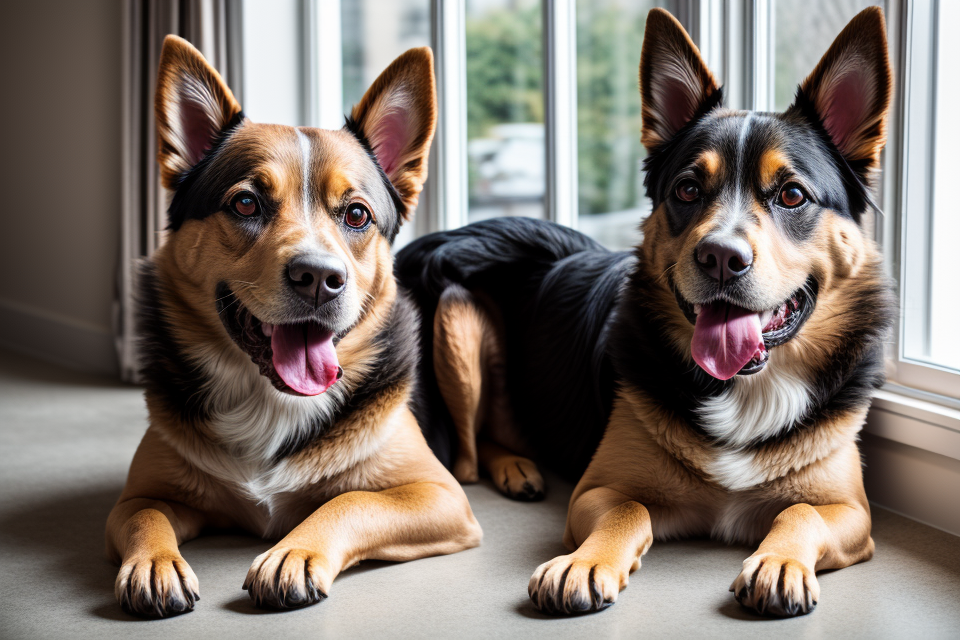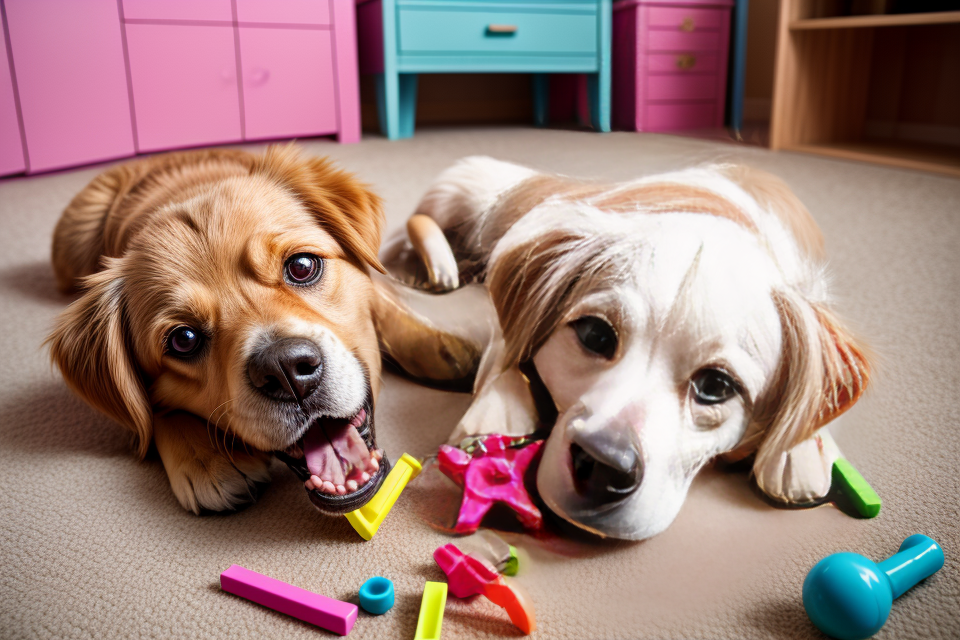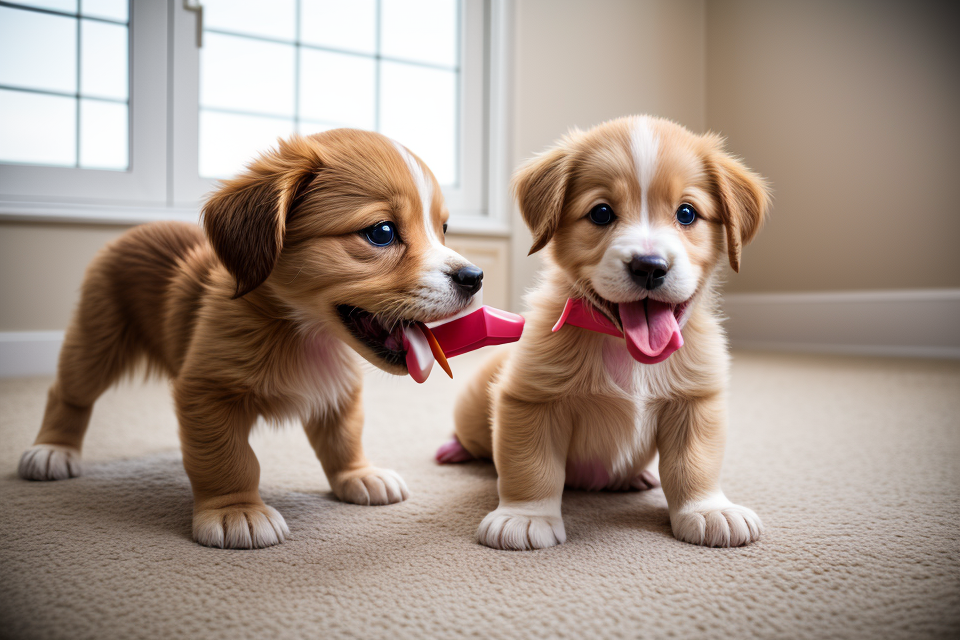Is your furry friend’s favorite chew toy looking a little worse for wear? As a responsible pet owner, it’s important to know when a chew toy has reached the end of its lifespan. In this article, we’ll explore the signs to look out for that indicate it’s time to retire your dog’s chew toy. From visible wear and tear to changes in your pup’s behavior, we’ll cover it all. So, grab a cup of coffee and let’s dive in to find out how to tell when your dog’s chew toy is worn out.
It’s important to regularly check your dog’s chew toys for signs of wear and tear to ensure they are not becoming a choking hazard. Signs that a chew toy is worn out include tears, holes, and fraying. If the toy is already showing these signs, it’s best to discard it immediately. Additionally, if the toy is soft and has lost its shape, it’s likely time to replace it. It’s also a good idea to check for any small parts that may have become detached from the toy, as these can pose a choking hazard.
Signs Your Dog’s Chew Toy is Worn Out
Fraying or Shredding
When a chew toy becomes worn out, it may start to fray or shred. This can be caused by the constant chewing and biting that the toy has endured. Here are some signs to look out for:
- Unraveled edges: If the edges of the toy are unraveling or coming apart, it’s a sign that the toy is worn out. This can be especially noticeable if the toy has a woven or braided design.
- Crumbling material: If the material of the toy is crumbling or breaking apart, it’s another sign that the toy has reached the end of its lifespan. This can be especially concerning if the toy is made of plastic, as it can create small pieces that your dog can swallow.
It’s important to keep an eye on your dog’s chew toys and replace them when they become worn out. Not only is it a safety hazard for your dog, but it can also make the toy less enjoyable for them to chew on.
Discoloration
When a chew toy becomes worn out, it may start to show signs of discoloration. This can be a clear indication that it’s time to replace the toy. Here are some of the types of discoloration you may notice:
Stains
One of the most common types of discoloration on a chew toy is stains. These can be caused by a variety of substances, including blood, urine, and saliva. If your dog has been chewing on the toy for a while, it’s likely that there will be some stains present.
Bloodstains
If your dog has been chewing on the toy and it has caused any cuts or injuries to their mouth, you may notice bloodstains on the toy. This is a clear indication that the toy has become worn out and should be replaced.
Urine Stains
Urine stains can also be a sign that the toy has become worn out. This is especially true if your dog has been using the toy as a place to mark their territory. Urine stains can be difficult to remove, and the toy may start to develop a bad odor if they are not cleaned properly.
Overall, stains can be a clear indication that it’s time to replace your dog’s chew toy. Not only do they look unappealing, but they can also be a sign that the toy is no longer safe for your dog to chew on.
Loss of Elasticity
When a chew toy has been subjected to extensive biting and chewing, it may begin to lose its elasticity. This is an important sign that the toy has reached the end of its lifespan and should be replaced. Here are some specific indicators of loss of elasticity:
Brittle Material
One sign that a chew toy has lost its elasticity is if it becomes brittle and breaks easily. This means that the material has become weakened and can no longer withstand the pressure of your dog’s teeth. If you notice that your dog’s chew toy is breaking apart or becoming misshapen when they chew on it, it’s likely that it’s worn out and should be replaced.
Soft and Pliable Material
On the other hand, if a chew toy becomes too soft and pliable, it may also be a sign that it’s worn out. This can happen when the material has been exposed to a lot of saliva and has become saturated, or when it has been chewed on for a long time and the fibers have become frayed and weakened. If you notice that your dog’s chew toy is no longer firm and resilient, it’s likely that it’s reached the end of its lifespan and should be replaced.
Presence of White Residue
One of the most common signs that your dog’s chew toy has reached the end of its lifespan is the presence of white residue. This residue can take two forms: salt-like or chalky.
Salt-like Residue
Salt-like residue is usually found on the surface of the chew toy and is a result of your dog’s saliva mixing with the materials used to make the toy. This residue is typically a white or yellowish color and has a crumbly texture. It is a clear indication that your dog has been chewing on the toy for an extended period of time and that the materials have begun to break down.
Chalky Residue
Chalky residue is similar to salt-like residue but is typically found on the inside of the chew toy. It is a result of the materials used to make the toy breaking down and becoming powdery. This residue is usually a white or grayish color and can be easily rubbed off on your fingers. Like salt-like residue, chalky residue is a clear sign that your dog’s chew toy has reached the end of its lifespan.
It is important to note that the presence of white residue alone does not necessarily mean that the chew toy is worn out. However, if the residue is accompanied by other signs such as fraying, discoloration, or a significant change in texture, it is likely that the toy has reached the end of its lifespan and should be replaced.
Change in Odor
When a chew toy becomes worn out, it can start to emit an unpleasant odor. This is usually caused by the accumulation of dirt, saliva, and other substances that have been absorbed into the material over time. Here are two types of odors you may notice:
Musty Odor
A musty odor is often a sign that the chew toy has been exposed to moisture or humidity for an extended period. This can happen if your dog has been chewing on the toy outside in the rain or if it has been stored in a damp area. The odor is usually a result of mold or mildew growth, which can be harmful to your dog if they ingest it.
Plastic Odor
Some chew toys are made from plastic, which can also start to emit an unpleasant odor when it becomes worn out. This odor is usually a result of the breakdown of the plastic material over time. It can also be caused by the buildup of bacteria and other microorganisms that thrive in warm, moist environments. If you notice a plastic odor coming from your dog’s chew toy, it’s best to replace it as soon as possible.
Missing Parts
A worn-out chew toy may have missing parts that indicate it’s time for a replacement. These missing parts can be either torn seams or chewed-off pieces.
Torn Seams
One of the first signs that your dog’s chew toy is worn out is when the seams start to tear. The seams are the parts of the toy that hold it together, and when they start to tear, the toy becomes less durable and can easily break apart. Torn seams can also expose the stuffing, which can be ingested by your dog, leading to health issues.
Chewed-off Pieces
Another sign that your dog’s chew toy is worn out is when there are chewed-off pieces. When a dog chews on a toy, it can wear down the material and cause it to break apart. If your dog has chewed off large pieces of the toy, it’s likely that the toy is no longer safe for them to play with. Chewed-off pieces can also be a choking hazard, so it’s important to replace the toy as soon as possible.
How Worn-out Chew Toys Affect Your Dog
Health Risks
Choking Hazards
Dogs, being avid chewers, may ingest small pieces of the chew toy that have broken off. These small pieces can cause choking hazards, particularly in smaller breeds or young puppies. If your dog is coughing, gagging, or having difficulty breathing, seek immediate veterinary attention.
Gum Injuries
When dogs chew on toys, they may accidentally bite down too hard and cause injuries to their gums. This can lead to pain, bleeding, and inflammation. Signs of gum injuries include pawing at the mouth, drooling, and reluctance to eat. If you notice any of these symptoms, consult your veterinarian for advice on how to care for your dog’s gums.
Blockages
Worn-out chew toys can also cause blockages in your dog’s digestive system. If your dog swallows large pieces of the toy, it can get stuck in their throat or intestines, leading to serious health problems. Watch for signs of blockages, such as vomiting, diarrhea, abdominal pain, and lethargy. If you suspect a blockage, seek veterinary care immediately.
Behavioral Issues
When a chew toy becomes worn out, it can start to affect your dog’s behavior in a number of ways. Here are some of the most common behavioral issues that you may notice:
- Aggression: A dog that is feeling anxious or frustrated may become more aggressive towards other dogs, people, or even inanimate objects. This can be especially problematic if your dog is already prone to aggression, as a worn-out chew toy may exacerbate these behaviors.
- Anxiety: A dog that is anxious or stressed may exhibit a range of behaviors, from pacing and restlessness to excessive barking and whining. If your dog is anxious, it may be due to a lack of appropriate outlets for their energy and curiosity, and a worn-out chew toy may not provide the mental stimulation they need.
- Destructive Behavior: A dog that is bored or frustrated may start to engage in destructive behaviors, such as chewing on furniture or digging holes in the yard. If your dog is already prone to destructive behaviors, a worn-out chew toy may not provide enough of a distraction to keep them occupied.
It’s important to monitor your dog’s behavior and look for signs of stress or anxiety, as these can be indicators that their chew toy is no longer providing the necessary mental stimulation. By providing your dog with appropriate, engaging chew toys, you can help prevent these behavioral issues and keep your furry friend happy and healthy.
How to Replace Your Dog’s Chew Toy
Choosing a New Chew Toy
When it comes to selecting a new chew toy for your furry friend, there are several factors to consider. The right chew toy should not only keep your dog entertained but also provide mental and physical stimulation. Here are some things to keep in mind when choosing a new chew toy for your dog:
Material
The material of the chew toy is an important factor to consider. Different dogs have different preferences when it comes to the texture and taste of the material. Some dogs prefer rubber, while others prefer rope or nylon. It’s important to choose a material that your dog enjoys and that is safe for them to chew on.
Size
The size of the chew toy is also important. Some dogs prefer larger chew toys that they can really sink their teeth into, while others prefer smaller chew toys that they can carry around with them. Choose a size that is appropriate for your dog’s mouth and that they can easily hold and chew on.
Shape
The shape of the chew toy is also important. Some dogs prefer chew toys that are flat and broad, while others prefer chew toys that are round and small. Choose a shape that your dog enjoys and that is easy for them to hold and chew on.
Texture
The texture of the chew toy is also an important factor to consider. Some dogs prefer chew toys that are soft and squishy, while others prefer chew toys that are hard and challenging. Choose a texture that your dog enjoys and that provides them with the appropriate level of stimulation.
By considering these factors, you can choose a new chew toy that will keep your dog entertained and happy for hours to come.
Introducing the New Chew Toy
Supervision
When introducing a new chew toy to your dog, it is important to supervise the interaction to ensure that your dog is comfortable with the new toy. Observe your dog’s behavior and body language to determine if they are enjoying the new toy or if they are showing signs of discomfort or aggression. If your dog appears to be uncomfortable or aggressive, it is important to remove the toy and replace it with a different one.
Gradual Introduction
To ensure a smooth transition, it is recommended to gradually introduce the new chew toy to your dog. Start by allowing your dog to sniff and lick the new toy, then gradually increase the amount of time they spend interacting with it. This will allow your dog to become familiar with the new toy and reduce the likelihood of them becoming bored or destructive.
Positive Reinforcement
Positive reinforcement is a key component of introducing a new chew toy to your dog. When your dog shows interest in the new toy, praise and reward them with treats or playtime. This will encourage your dog to continue interacting with the new toy and associate it with positive experiences. Additionally, providing praise and rewards will help to strengthen the bond between you and your dog.
Tips for Extending the Life of Your Dog’s Chew Toy
Rotation
Rotating your dog’s chew toys is an effective way to extend their lifespan. Here are some guidelines to follow:
Frequency
It’s essential to rotate your dog’s chew toys frequently to prevent them from becoming boring and to keep them engaged. A good rule of thumb is to rotate the toys every two to three days. This will ensure that your dog always has a fresh toy to chew on and doesn’t get bored with the same toy all the time.
Storage
Storing your dog’s chew toys properly is also important to extend their lifespan. It’s best to store them in a cool, dry place, away from direct sunlight. This will prevent the toys from becoming brittle or damaged due to exposure to heat or moisture. Additionally, storing the toys in a container or basket will help keep them organized and make it easier to rotate them frequently.
Monitoring
One of the most important things you can do to extend the life of your dog‘s chew toy is to monitor its condition regularly. Here are some specific things to look out for:
Observation
First, pay close attention to your dog’s behavior when they are playing with the chew toy. If they seem to be chewing on it less or losing interest in it, it may be time to replace it. Additionally, look for any signs of wear and tear, such as fraying or tears in the material.
Timely Replacement
It’s important to replace your dog’s chew toy before it becomes too worn or damaged. This not only helps to prevent injuries to your dog’s mouth, but it also helps to keep them engaged and interested in their toys. A good rule of thumb is to replace a chew toy every few months, depending on how often your dog plays with it and how well it has held up.
By monitoring your dog’s chew toy regularly and replacing it when necessary, you can help to ensure that they always have a safe and enjoyable toy to play with.
Proper Storage
When it comes to extending the life of your dog‘s chew toy, proper storage is crucial. Here are some tips to ensure that your dog’s chew toy stays in good condition for as long as possible:
Cleaning
After each play session, it’s important to clean your dog’s chew toy thoroughly. This will help to remove any dirt, saliva, or other debris that may have accumulated during playtime. You can use a mild soap and water solution to clean the chew toy, and be sure to rinse it thoroughly before storing it away.
Drying
After cleaning the chew toy, it’s important to dry it completely before storing it. Moisture can cause the chew toy to become brittle and break down more quickly, so it’s important to ensure that it’s completely dry before putting it away. You can use a clean towel to pat it dry, or place it in a well-ventilated area to air dry.
Storage Location
When it comes to storing your dog’s chew toy, it’s important to choose a location that is safe and secure. Ideally, you should store the chew toy in a cool, dry place where it won’t be exposed to excessive heat or moisture. You should also avoid storing the chew toy in direct sunlight, as this can cause the materials to degrade more quickly.
Additionally, it’s important to store the chew toy in a location that is out of reach of your dog when it’s not in use. This will help to prevent your dog from accidentally damaging or destroying the chew toy when you’re not around to supervise.
By following these tips for proper storage, you can help to extend the life of your dog‘s chew toy and ensure that it remains safe and enjoyable for your furry friend to play with for as long as possible.
FAQs
1. How can I tell if my dog’s chew toy is worn out?
There are several signs that indicate a chew toy is done. If the toy is showing visible signs of wear and tear, such as fraying or splitting, it’s time to replace it. Additionally, if the toy is losing its shape and becoming misshapen, it’s no longer safe for your dog to chew on. If the toy has been in use for an extended period, it’s best to replace it to ensure your dog’s safety.
2. How long does a chew toy typically last?
The lifespan of a chew toy can vary depending on the type of toy and the size of your dog. For example, a well-made chew toy made from durable materials like nylon or rubber can last several months or even years. However, chew toys made from softer materials like rope or fabric may not last as long. It’s important to monitor your dog’s chew toys regularly and replace them when they become worn or damaged.
3. Is it safe for my dog to continue chewing on a worn-out chew toy?
No, it’s not safe for your dog to continue chewing on a worn-out chew toy. Worn-out chew toys can break apart easily, causing your dog to choke or swallow pieces of the toy, which can be dangerous. Additionally, worn-out chew toys can also harbor bacteria, which can cause health problems for your dog. It’s important to replace worn-out chew toys to ensure your dog’s safety and health.
4. How often should I replace my dog’s chew toys?
It’s recommended to replace your dog’s chew toys every few months, or sooner if they become worn or damaged. This will ensure that your dog always has a safe and engaging chew toy to enjoy. It’s also a good idea to keep an eye on your dog’s chew toys during playtime and replace them if you notice any signs of wear or damage.
5. What type of chew toys are the most durable?
Chew toys made from durable materials like nylon, rubber, and heavy-duty plastics are generally the most durable. These materials are designed to withstand the chewing and biting of dogs, and can last longer than chew toys made from softer materials. Additionally, chew toys with a design that is less likely to break apart, such as rope toys with multiple strands, can also be more durable.



